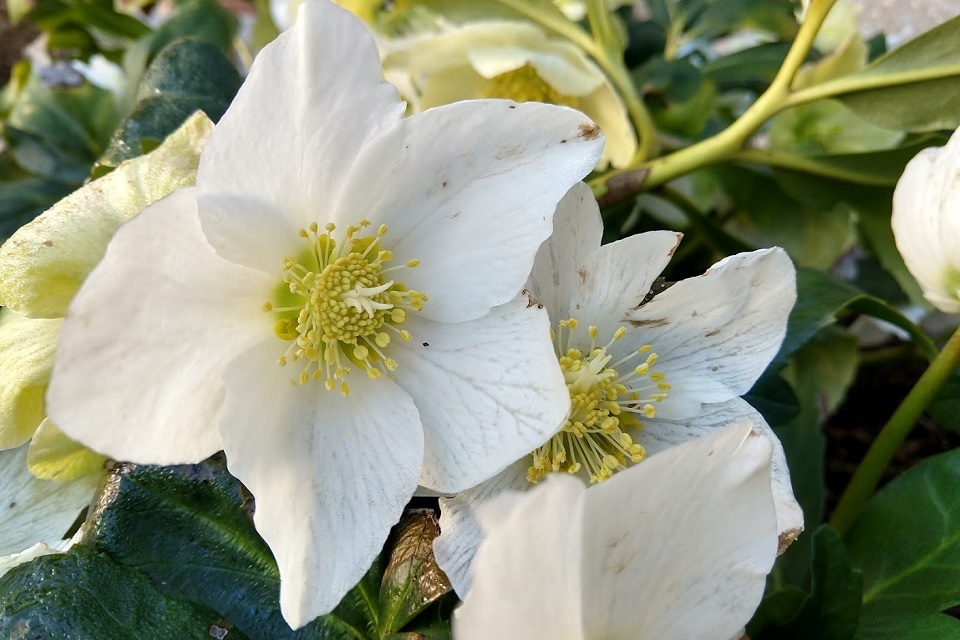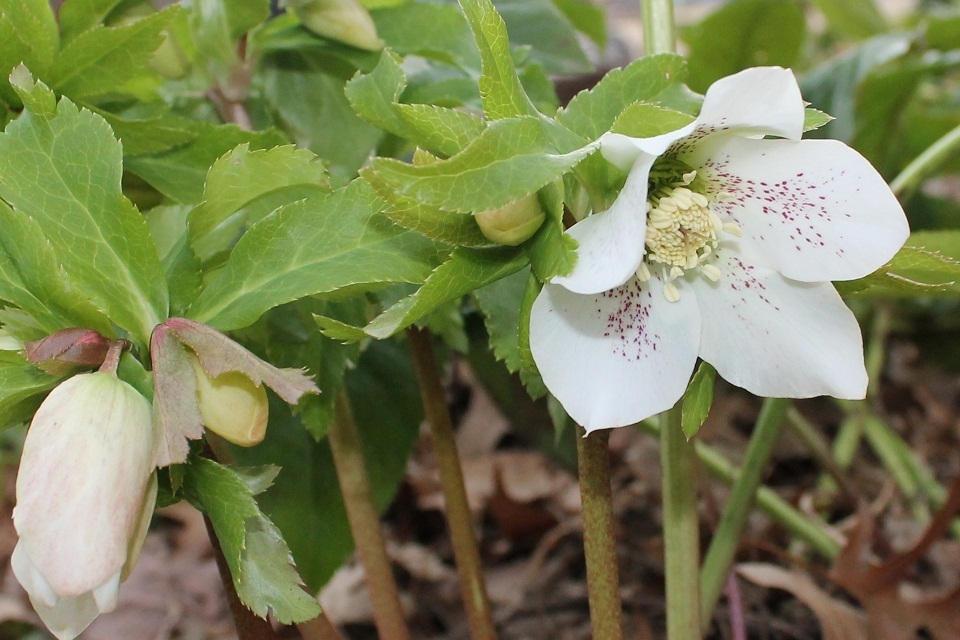
A Winter Beauty for Shady Landscapes
UT Gardens’ February 2019 Plant of the Month: Hellebore
Submitted by Derrick Stowell, Education Administrator, and Susan Hamilton, Director, UT Gardens
One plant sure to brighten the winter landscape is hellebore, as it is commonly known. Botanically it is known as Helleborus. You may also know it as Christmas rose or Lenten rose because of its rose-like flowers that are in bloom during winter and early spring around the Christian observance of Lent. The genus name Helleborus originates from the Greek words helein, which means to injure, and bora, which means food. Put together, these Greek words indicate that the plant is bitter and toxic to eat.
There are about 15 species of hellebore, and all have some ornamental value. The most popular are the Oriental hybrid hellebores (Helleborus x hybridus cvs.). Recent breeding and hybridizing have expanded the palette of hellebore, and unique flower and foliage forms and textures have resulted in reviving interest in this woodland perennial. We now have incredible selections with improved characteristics such as new flower colors, double flowers, variegated foliage, and flowers that stand erect rather than nodding. Some of the most exciting trends include truer and more unusual colors from amber to almost black, increased plant heights and outward-facing blooms.
Gardeners are not limited, however, to a rainbow of solid-color flowers. Hellebores can also have beautiful picotee edges (edges that are a different color than the rest of the flower) or veining to adorn the outside of the bloom. Inside the bloom, they can have spotting or a dark center that draws your eye into the flower.
The varied hybrid offerings extend to the shape of the flowers as well. In addition to single, double and star-shaped flowers, hellebores can have an anemone-flowered form, which looks like something between a single and a double. With the dizzying array of choices available, it’s easy to find a hellebore you will like.
When purchasing a hellebore, the best way to ensure you are getting what you want is to buy it in bloom. February into April is be the ideal time to shop your local garden centers and nurseries when they are stocked with a variety of selections in bloom.
Hellebores are easy to grow if you provide organically rich soil and a part-shade location. Although plants need to be kept slightly moist when they are becoming established, they become relatively drought-tolerant with age. Plants tend to clump about 2 feet wide and 2 feet tall. Some hellebore will rapidly self-sow around the garden, and since many are now hybrids, you never know what color of bloom will result. The leathery foliage of hellebore looks best when sheared in late fall just before flowers and new growth emerge. Because they flower when the weather is cool, they have an exceptionally long bloom time, often flowering from January to May. Most selections are cold hardy to USDA Hardiness Zones 5 (-20 degrees F) and are resistant to both deer and voles.
Hellebores are the perfect winter-flowering perennial for the woodland shade garden. They combine wonderfully well with flowering bulbs such as daffodils and snowdrops as well as other shade-loving perennials like ferns, heuchera, foam flower, hosta, woodland phlox and lungwort. They lend themselves well to being planted in the foreground of a garden and look great in a woodland setting when tucked in next to natural elements such as stone, stumps and logs. If you have a slope, planting hellebores on a hillside allows you to see into the blooms on selections that have nodding flowers.
You can find numerous selections of Helleborous hybrids growing in all three UT Gardens locations across the state (Knoxville, Crossville and Jackson). Selections known to perform well, as reported by numerous horticulturists throughout Tennessee, include ‘Josef Lemper’, ‘Penny’s Pink’, ‘Sparkling Diamonds’ and ‘Golden Sunrise’.

The UT Gardens includes plant collections located in Knoxville, Jackson and Crossville. Designated as the official botanical garden for the State of Tennessee, the collections are part of the University of Tennessee Institute of Agriculture. The Gardens’ mission is to foster appreciation, education and stewardship of plants through garden displays, educational programs and research trials. The Gardens are open during all seasons and free to the public. For more information, see the Gardens website: ag.tennessee.edu/utg.
Contact:
Susan Hamilton, Director of the UT Gardens
Note: Hellebores were previously featured as the UT Gardens’ Plant of the Month for February 2013. Because they are such a popular winter-bloomer and have changed somewhat in recent years due to the addition of new hybrids, the staff of the UT Gardens felt they are worth featuring once again for new audiences as well as for regular readers.